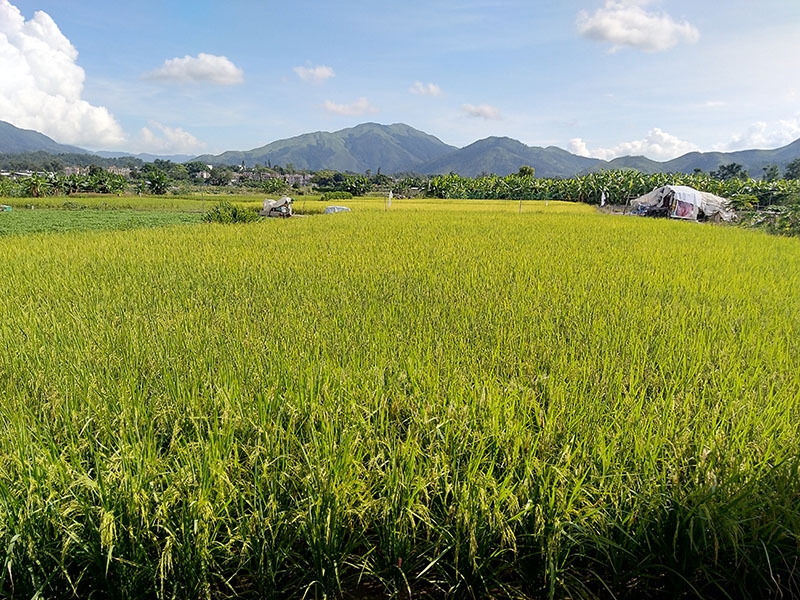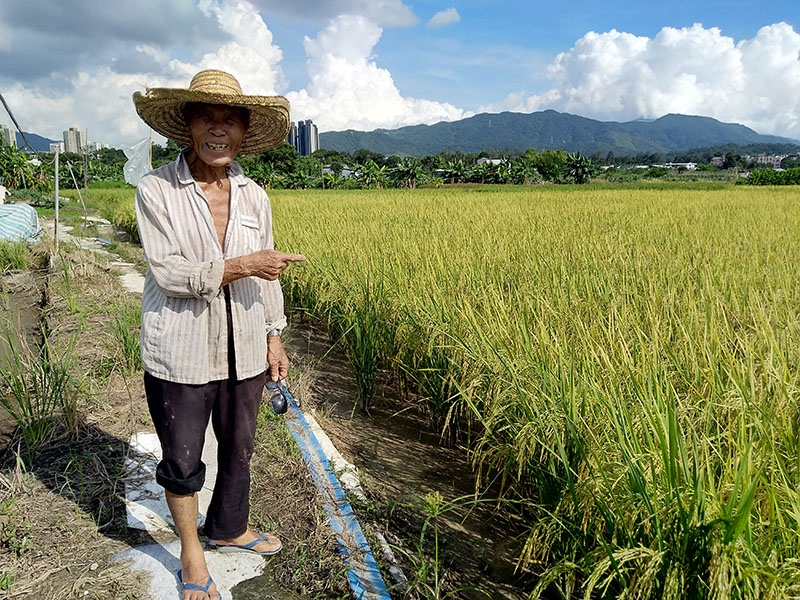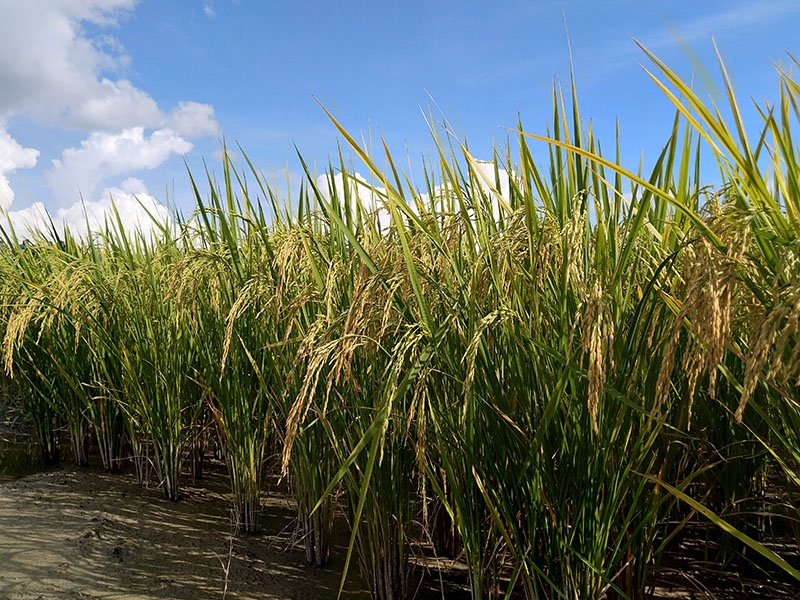Days of shower and sunny seems quite balanced this early summer and more importantly there are no serious flooding and typhoon, therefore, growth of paddy is very satisfactory. Weather was very nice on weekends, so our colleagues visited the golden scenic Long Valley to take some quality pictures.
Both sunshine and water are crucial for the growth of paddy. Burning sun evaporates water in fields quickly while cloudy and rainy weather increase the chance of pest invasion. This season, even our old farmer appraised their growth and laughed: where are those hungry birds? In our experiences, Munia had gathered in large flock eating the rice granules 2 weeks before harvest. However, we seldom take action to scare away or block them from eating so as to balance our harvest and its ecological values. We remember there were a few times Munia group size went up to hundreds and thousands which is abnormally large. We doubt most of the birds came from “mercy release” because there were some species from Africa within the flock. Apart from birds, paddy fields support the life cycle of lots of aquatic animals. Participants have found plenty of Bullfrog tadpole and larvae of dragonfly during the night safari tours we organized this year. Tadpole born in May has transformed into young frogs in July greeting their new life on land, which also mean it is time for us to go harvesting!

Early season of rice harvest in Long Valley

Old farmer appraises the growth of paddy

Rice ear in golden collar

